Description
Features of Light Fastness Tester TF420
The Fastness to Light Tester TF420 achieves a digital setting of light intensity.
Offering real-time monitoring, closed-loop control, and automatic adjustment to meet diverse standards, the system provides a comprehensive solution for precise testing. Additionally, it supports standard settings of 420nm; moreover, options for 340nm, 300–400nm, and 300–800nm are available upon request. This flexibility allows users to tailor their testing conditions to specific requirements, enhancing the overall efficiency and effectiveness of their processes.
The Fastness to Light Tester TF420 effectively simulates natural sunlight and various climate conditions.
It utilizes a 2500W long-arc xenon lamp to replicate the daylight spectrum; furthermore, it offers multiple operating modes, including rain, alternating light, dark, public rotation, and self-rotation. As a result, this versatility allows it to accurately recreate real climate scenarios, enhancing the reliability of the testing process.
The Xenon Tester TF420 delivers precise and consistent testing for temperature and humidity.
It features an industrial temperature control system for cooling, a multi-stage ultrasonic humidification system with intelligent control, and the ability to quickly adjust the test chamber’s temperature and humidity, ensuring reliable and stable test conditions.
Why Light Fastness Tester TF420 Stands Out?
Enhanced Accuracy in Xenon Testing.
Utilizing the black panel thermometer (BPT), standard black panel thermometer (BST), radiometer, and samples collected from the same station (equidistant) for detection, the measured data is transmitted synchronously using wireless radio frequency technology.
Efficient mode lowers operating costs.
All xenon test specimen clamps offer independent timing, allowing simultaneous testing of different samples. This feature facilitates monitoring during Xenon Arc Testing and is both practical and cost-effective.
Color touch screen display, a variety of expressions.
Color touchscreen display with various visual options, including digital formats and graphs. It can show real-time data for light irradiance, temperature, and humidity curves.
The TF420 Xenon Tester can run for a long time.
This Sunlight and Weathering Fastness Test Chamber can operate continuously for up to 1000 hours, accommodating high-capacity, long-duration test applications and specific customer requirements.
The Xenon Test Chamber TF420 offers a competitive price point.
The TESTEX Weatherometer is available at an affordable purchase price, along with low lamp costs and operating expenses, ensuring stable operation. Now, even the smallest laboratories can invest in a Light Fastness Tester.
Specifications of Light Fastness Tester TF420
| Working modes | To simulate and reinforce the impact of the nature of the measured object, providing light and dark, temperature and humidity, raining and other quantitative indicators. |
| Irradiance | 0.80 ~ 1.50W/m2 @ 420nm (340nm, 300~400nm, 300~800nm is offered on request), Digital set, automatic closed-loop compensation |
| Irradiance accuracy | ± 0.02W/m2 @ 420nm |
| Light source | 2500W air-cooled long-arc xenon lamp |
Sample holder
| • ISO / GB
16 Pcs, can hold samples 135 x 45mm
• AATCC
8 Pcs, can hold samples 140 x 75mm |
| Temperature range | 25 ~ 50 ℃, Resolution 0.1 ℃ |
| Humidity range | Bright cycle 10 ~ 70% RH,
Dark cycle 30 ~ 95%, R. H.
resolution 0.1% |
| Test time control | ≤ 10000h |
| Rotation speed of sample holder | 5 rpm |
| BPT Range | (40 ~ 80) +/- 2℃ |
| BST Range | (40 ~ 85) +/- 1℃ |
Weight
Power
Dimensions
| Length: 1050 mm | Width: 660 mm | Height: 1680 mm |
Standards
| ISO 105-B02 | ISO 105-B04 | GB/T 8427 | GB/T 15102-2006 |
Application of Light Fastness Tester TF420
Textile light fastness is crucial. The Xenon Tester TF420 is a key tool for textiles. You can use it to test the color and performance changes of many materials. These include textiles, leather, and fake leather. They also include garments, auto parts, plastics, dyes, paints, and other colored materials. Adjust the temperature, humidity, and rain in the Weatherometer. Use a xenon lamp and light filter to mimic daylight. These tests check the material’s light fastness, sunlight weather fastness, and light aging resistance.
TESTEX Light Fastness Tester TF420 features advanced multi-point change functions, enabling precise online control of light intensity. It automatically detects and adjusts light energy, ensuring optimal conditions. The closed-loop control system meticulously regulates temperature and humidity, while also controlling the blackboard’s temperature circuit. You can call this Weatherometer a Xenon Test Chamber or a Fadeo meter. This is based on these applications. Besides, it can shorten the testing time. It uses xenon arc irradiation in a chamber. So, we can also call it a Xenon Tester.
Xenon Test Chamber TF420 applies to Light Fastness Test iso 105 b02. It also applies to AATCC16.3 Color Fastness to Light. Five xenon testing methods for ISO 105 B02 can be acquired in this post. Also, you can easily get your sample’s lightfastness rating from this Xenon Tester.
Test Principle of the Fastness to Light Test, How is Colour Fastness to Light tested?
The TESTEX Xenon Arc Test Chamber utilizes a full-spectrum xenon arc lamp as its light source, paired with a specialized filter glass to replicate the specific sunlight spectrum that reaches the specimen. The test simulates natural environmental conditions through a combination of temperature, humidity, rain, and condensation. After the exposure, we evaluate the material for signs of fading, discoloration, brittleness, and cracking, which indicate its light fastness and aging properties. We also check for color peeling and other potential issues. The degree of fading and aging is assessed using a gray sample card and blue wool standard. For more information about light fastness test standards, please feel free to reach out to us. We would be happy to assist you.
Know More about Fastness to Light Test
Lightfastness, also named “sunlight fastness”. Lightfastness is the ability of a product to keep its color. It must do so after being in the sun. The lightfastness scale ranges from poor to good, divided into 1 ~ 8 levels. Weather fastness is the ability to resist aging from sunlight, heat, cold, wind, and rain. Products like plastic, rubber, coatings, and fibers usually need to do those tests.
When the xenon testing is running, adjust the chamber’s temperature, humidity, and rain. Also, adjust other test conditions. The xenon lamp simulates sunlight. It tests the material’s ability to resist fading and aging. For more information about lightfastness, welcome to visit our website’s blog.
Welcome to TESTEX. We are a professional supplier of Light Fastness Testers. The Color Fastness to Light Tester TF420 is on sale. Contact us to get a price quote for a light-fastness tester.
Get the Latest Light Fastness Tester Price & Brochure Now!
Test principle of Xenon Test
In the xenon test, put the textile specimen and the mutually agreed reference standard specimen (blue standard wool) under exposure to sunlight according to the specified requirement. Then compare the degree of their discoloration. At the same time, we can make a determination of the grade of light fastness of the textile specimen, which is based on the blue wool light fastness standard sample exposed to sunlight. Besides, all the light fastness test standards of sunlight fastness apply a relative comparison method. However, the exposure equipment does not directly show the xenon test results. The performance of the Light Fastness Tester mainly depends on the control of the parameters that affect the test environment, including the spectrum, light intensity, temperature, relative humidity, etc.
Test procedures
Humidity regulation
1 Check whether the Xenon Tester is in good operating condition
2 Put a humidity control specimen on a hard card together with a blue wool standard and place it in the middle of the specimen holder as far as possible.
3 Place the loaded specimen holder on the specimen holder of the Xenon Tester.
4 After turning on the xenon lamp, keep the Xenon Tester running continuously until the test is completed.
5 put the partially covered humidity control specimens and blue wool standard at the same time under exposure to the sunlight.
Methods of exposure to sunlight
Under predetermined conditions, the specimen and the blue wool standard should be exposed to sunlight at the same time.
Method 1
This method is considered to be the most accurate and should be used when ratings are in dispute. Its basic feature is to control the exposure period by checking the specimen
1 Place the specimen, the blue wool standard, and the cover in accordance with certain requirements, and expose them to the xenon lamp, lifting the cover from time to time to check the light effect of the specimen.
2 Expose the specimen to the sunlight in accordance with the required degree.
Method 2
1 This method is suitable for testing a large number of specimens at the same time. The basic feature is that the exposure period is controlled by checking the blue wool standard, and only one set of the blue wool standard is used to test a batch of specimens with different light fastness, thus saving the material used for the blue wool standard.
2 The specimens and blue wool standards are covered and then exposed until the relevant requirements are met.
Troubleshooting
1 If the power is turned on and there is no display, it means that the power is not on or the power indicator is damaged. If the power indicator is damaged, replace it. If there is no power output on the power output terminal, please check the power cord or energized socket.
2 If the power is turned on and there is an indication on the power indicator, but the Xenon Tester does not work when pressing the start button, please check whether the relay has dropped or disconnected. If so, please promptly connect. But if there is no drop or disconnection, indicating that the relay has been damaged, then replace it in time.
Dos & Don’ts when operating the xenon lamp weather meter?
1 Do not open the right box cover during the operation of the Xenon Tester. The right box body of the weather ometer is mainly the electrical function component. There is a high dangerous voltage above 10kV when the xenon arc lamp flip-flop works. Removing the lid of the box may cause the personnel to touch the electrical component part, resulting in an electric shock.
2. Do not try to manually press the protection switch of the test storehouse for lighting operation when the test storehouse glass door is opened. It is forbidden to open the test storehouse glass door when the xenon arc lamp is ignited.
3. Do not directly view the xenon arc lamp light source of the fadeometer in the unprotected state to avoid damage to the eye.
4. Operators should keep their attention in the process of operation in order to prevent the occurrence of dangerous failures caused by negligence.
5. The xenon arc weather ometer must be disconnected from the power supply before the maintenance of the equipment. The maintenance of the light fastness testing machine, especially for the electrical part, should be operated by special technicians.
How to use the fade ometer? Through this article, I think you might have gotten some information. If you want to know more about xenon weather meter prices, please contact us. As a professional supplier of Xenon Tester, we are committed to continually improving the user experience, TESTEX Textile Testing Equipment is a reliable choice for testing textile quality.
How to Ensure Color Fastness to Light?
1. Selecting dyes according to fiber properties and textile uses
For cellulose fiber textiles, dyes with better antioxidant properties should be selected. For protein fiber textiles, dyes with better anti-reduction properties or containing weak oxidizing additives should be chosen. Other fibers should be selected based on their impact on fading. In order to enhance the light and oxidation stability of azo compounds in dye molecules, some strong electron-withdrawing groups are usually introduced into the adjacent position of the azo group during the dye synthesis process, thus reducing the electronic cloud density of the azo atomic. In addition, hydroxyl groups can also be introduced into the two adjacent positions of the azo group, and their coordination ability can be used to chelate with heavy metals, thereby lowering the electronic cloud density of the azo hydrogen atoms and shielding the azo group, ultimately improving the light fastness of the dye.
2. Dye selection based on color depth
A large number of experiments have shown that the light fastness of reactive dyes on cellulose fibers is proportional to the depth of the color, that is, the darker the color, the better the light fastness. This is because the higher the concentration of the dye on the fiber, the greater the aggregation of the dye molecules, and the smaller the surface area of the dye exposed to air, moisture, and light, and the lower the chance of oxidative degradation of the dye. Conversely, for lighter shades, the dye is mostly in a highly dispersed state on the fiber, and the chance of being exposed to light is higher, resulting in significantly reduced light fastness. Therefore, for lighter shades, dyes with higher light fastness should be selected. In addition, the addition of many finishing agents such as softeners and wrinkle-resistant agents to fabrics can also reduce the light fastness of the product. Therefore, dyes that are insensitive to these finishing agents should be selected.
3. Selecting dyes with good light stability and compatibility for color mixing
Different dyes have different fading properties, and even the photo color fading mechanism is different. Sometimes, the existence of one dye can sensitize the fading of another dye. When mixing colors, dyes that do not sensitize each other and can even improve light stability should be selected, which is particularly important for darker shades such as black. If one of the primary colors fades too quickly, it will quickly cause discoloration of the dyed fiber or fabric, and the remaining dye residue after fading will also affect the light stability of the other two dyes that have not faded. Reasonable control of the dyeing process, ensuring a full combination of dyes and fibers, and minimizing the presence of hydrolyzed and unreacted dyes on the fibers are important ways to achieve higher light fastness.
[contact-form-7 id="16355" title="Inquiry"]
Q1: What is the application of Light Fastness Tester besides textiles?
A1:
Light fastness testers are primarily used to assess the color stability of materials under light conditions, but they are not limited to textiles and can be used for many other products and materials.
The following are other areas and types of products for which light color fastness testers are commonly used:
1. Plastic products
Plastic housings: The color stability of plastic housings for appliances, electronics, car interiors, etc., is critical under long-term light exposure. Light color fastness testers are used to assess the fading and aging of these plastic materials under sunlight, UV, and other light sources.
Outdoor plastic products: such as outdoor furniture, plastic pipes, billboards, etc. Light color fastness tester can assess how much they fade in sunlight.
2. Leather products
Footwear and leather bags: Leather products are exposed to sunlight when used outdoors and their color durability needs to be assessed. A light fastness tester can be used to detect the color change of natural and artificial leather under light.
Car seats: car seat leather is often exposed to sunlight, so a light color fastness test is carried out to ensure the durability of the leather in the long-term light.
3. Paints and coatings
Architectural coatings: coatings used for exterior and interior walls may fade under sunlight, and light fastness testers can be used to test the light resistance of coatings.
Automotive coatings: Exterior coatings for automobiles need to maintain color stability under long-term sunlight exposure, and light fastness testers can be used to evaluate their light resistance and aging resistance.
Furniture Coatings: Coatings for household items such as wooden furniture also need to be tested for color stability under light conditions.
4. Dyes and pigments
Pigments and dyes: Pigments and dyes used on different materials, such as plastics, paints, inks, etc., need to be tested for their light resistance under light conditions to ensure the color stability of the final product.
Cosmetics: Dyes and pigments in cosmetics are exposed to light in daily use. Light fastness testers can evaluate the color stability of products such as lipsticks, foundations, and eye shadows.
5. Paper and Printed Materials
Books and posters: printed materials, advertising materials, book covers, etc. are often exposed to light. Light color fastness testers can assess the color durability and light resistance of printed materials.
Packaging materials: The color fastness of packaging materials used for food, beverages, and consumer products, especially those that need to be displayed outdoors, is also a factor to be considered.
6. Automotive industry
Automotive interiors: interior materials, including fabrics, plastics, leather, and carpets, need to maintain color stability when exposed to sunlight for long periods, and light fastness testing is used to assess the light fastness of these materials.
Exterior automotive parts: such as paint, plastic accessories, etc., often need to be tested for light fastness to ensure that their color persistence under bright light exposure.
7. Building materials
Exterior building materials: These include exterior materials such as ceramic tiles, wall tiles, stone, and plastic decorative panels, for which light fastness testing can be used to detect fading under light exposure.
Curtains and shading materials: Products such as curtains and shades in buildings need to be tested for color fastness to prolonged light exposure, especially fabrics used outdoors or near windows.
8. Toys and children's products
Plastic toys: Children's toys, especially outdoor toys, can fade when exposed to sunlight. Light fastness testers are used to ensure that the color of these products does not change significantly due to light exposure.
Soft toys: Stuffed toys and cloth toys also need to be tested for color fastness to ensure that the color is stable when exposed to light.
9. Architecture and interior decoration
Wallpaper and wallcoverings: These decorative materials are often exposed to sunlight, and light fastness testers can assess their lightfastness to ensure long-term color stability.
Carpets and curtains: For interior decorative items such as carpets and curtains, especially those exposed near windows, color fastness testing helps prevent them from fading due to sunlight.
10. Electronic displays and digital products
Electronic product casing: The casing materials of cell phones, tablets, and laptops, especially those with unique color designs, need to be tested for their color durability under light.
Displays: some high-end displays or advertising screens may need to test the stability of the display color under long-term light.
Light color fastness testers are used in a wide range of applications, covering many different types of materials and products in daily life, to ensure that they maintain good color performance and stability under light.
Q2: What are the factors affecting colour fastness to light?
A2: The main factors affecting sun fading include light, the molecular structure of the dye, the focusing state of the dye, the depth of dyeing, the color combination of the dye, the additives required for the dyeing process, fiber properties, and locality. These factors are typically assessed using a Sunlight and Weathering Fastness Test Chamber or a Light Fastness Testing Machine, which simulate light exposure to evaluate the material's resistance to fading.
Q3: Is the UV Light Stability Tester the same as the Light Fastness Testing Machine TF420?
A3: UV Light Stability Tester, also called UV Accelerated Weathering Tester focuses specifically on the
UV part of the spectrum, and is often used to test the degradation of materials (like plastics or coatings).
For UV Light Stability Tester, you can check
this page.
Light Fastness Testing Machine TF420 uses a
full-spectrum light source (xenon arc) to simulate both UV and visible light, focusing on the
color fastness of textiles and dyed materials.
Q4: What is the difference between air-cooled and water-cooled xenon arc light fastness tester?
A4: The difference between
air-cooled and
water-cooled xenon arc light fastness testers mainly revolves around how they manage the heat produced by the xenon arc lamp during testing.
- Air-cooled xenon arc testers are simpler, cost-effective, and easier to maintain, making them ideal for short tests or environments where water supply is limited. However, they may provide less stable temperature control.
- Water-cooled xenon arc testers offer superior cooling performance and more consistent test conditions, which leads to more accurate and reliable results, especially for long or high-intensity tests, but they come with higher complexity, maintenance, and cost requirements.
The choice between the two systems depends on the specific testing needs, including the required precision, duration of the tests, and the resources available for operation.
Q5: How to differentiate related terms among “Xenon Testing” “Weatherometer Test” “Fade O Meter”?
A5: The terms all refer to testing processes that assess the effects of light and environmental exposure on materials, but they have different focuses and nuances:
Xenon Testing:
This refers specifically to testing that uses a
xenon arc lamp to simulate sunlight. Xenon testing is often used to measure
lightfastness (resistance to fading) or
weatherability (durability in outdoor conditions) of materials like textiles, plastics, and coatings. It closely replicates natural sunlight, including UV, visible light, and infrared radiation.
Weatherometer Test:
A Xenon Arc Weatherometer is an instrument used for
accelerated weathering tests, which expose materials to artificial light sources (like xenon or UV lamps) along with other environmental factors such as temperature, humidity, and water spray. The goal is to simulate real-world conditions (e.g., rain, sun, heat) to evaluate how a material will perform outdoors over time.
Fade O Meter:
The
Fade O Meter is specifically designed to test
fading, typically due to light exposure. While it may use a xenon lamp like the others, the focus is more on how materials like textiles, dyes, and prints lose color over time under light exposure rather than broader environmental effects.
Q6: What is a good fastness to light?
A6: Good light fastness is the ability of a material to maintain its color stability under certain light conditions.
Light fastness is usually assessed by a series of tests and the results are expressed on a scale system usually ranging from 1 to 8, where 8 is the best performance indicating little or no change in color and 1 is the worst performance indicating significant fading of the color.
Criteria for assessing light color fastness scale:
Grade 8: Imperceptible color change (highest light fastness, excellent lightfastness).
Grade 7-8: Very slight color change (very good lightfastness).
Grades 6-7: Slight color change (good lightfastness, suitable for demanding materials).
Grade 4-5: Noticeable color change, but still within acceptable limits (medium light fastness, suitable for general use).
Grade 3-4: More obvious color change (poor light fastness, suitable for less light environment).
Grade 1-2: Serious color fading (worst light color fastness, easily affected by light).
Requirements for light color fastness in different industries:
High light color fastness requirements: products for outdoor use such as outdoor clothing, building materials, car interiors, etc. usually require light color fastness of level 6 or above to ensure long-term color stability.
Medium light color fastness requirements: indoor use of textiles, furniture, curtains and other products may be required to achieve 4-5 light color fastness, to ensure that the color is not easy to change significantly in indoor light conditions.
Low light color fastness requirements: Products that do not require high light color fastness, such as some low-priced daily consumer products or short-term use products, may only be required to meet the light color fastness of level 3 or lower.
Q7: What are the fastness to light test standards?
A7: The standards for light color fastness testing are mainly concerned with test methods and evaluation levels, and are widely used for textiles, plastics, leather and other materials to assess their color durability under light exposure. The following are some of the commonly used international standards for light color fastness testing:
1. ISO (International Organization for Standardization) standards
ISO 105-B02: Textiles - Color fastness test - B02: Color fastness to artificial light (xenon arc)
This standard is used to test the color change of textiles under a xenon arc light source, which simulates the ultraviolet and visible light of natural sunlight, in order to assess the light fastness of the material.
ISO 105-B04: Textiles - Color fastness tests - B04: Color fastness to artificial light (carbon arc lamp)
This standard uses a carbon arc lamp source for testing and is suitable for light stability testing of some specific materials.
2. AATCC (American Association of Textile Chemists and Dyers) Standards
AATCC TM16: Colorfastness Testing: Colorfastness to Light
This standard consists of different test methods (Methods A, B, and C) which are primarily used to evaluate the color fastness of textiles and related materials to artificial light. Xenon arc lamps are commonly used as the test light source.
AATCC TM186: Light and Weather Fastness: Xenon Arc Lamps
This standard evaluates the light and weather fastness of materials using a xenon arc lamp to simulate the effect of natural light in combination with humidity and temperature conditions.
3. ASTM (American Society for Testing and Materials) Standards
ASTM G155: Color Fastness of Non-Metallic Materials Using a Xenon Arc Lamp
This standard provides a lightfastness test method for non-metallic materials such as plastics, coatings, textiles, leather, etc. It primarily uses a xenon arc lamp to simulate the ultraviolet and visible components of natural daylight.
ASTM D4329: Standard for Accelerated Light and Weather Aging of Plastic Materials
This standard is mainly used to test the aging and fading of plastic materials under ultraviolet and visible light, as well as moisture conditions.
4. GB (China National Standard)
GB/T 8427-2019: Textile color fastness test Artificial light (Xenon arc) color fastness
This standard is similar to ISO 105-B02, which uses a xenon arc light source to simulate sunlight to test the color fastness of textiles to light.
GB/T 14576-2009: Xenon arc lamp aging test for plastics
Used to evaluate the aging and color fastness of plastic materials under xenon arc lamp simulated natural light exposure.
5. JIS (Japanese Industrial Standard)
JIS L0842: Test for color fastness of textiles to light (carbon arc lamp)
This standard tests the color fastness of textiles to a carbon arc light source.
JIS L0843: Colorfastness of textiles to light (Xenon arc lamp)
This standard tests the color fastness of textiles to light using a xenon arc lamp, similar to ISO 105-B02.
6. BS (British Standard)
BS EN ISO 105-B02: Textiles - Color fastness test: Color fastness to artificial light (xenon arc)
This standard is in accordance with ISO 105-B02 for the testing of color fastness to light for textiles.
BS 1006-B02: Textiles - Tests for color fastness to light
The British Standard test method for color fastness to light for textiles also uses a xenon arc lamp as the light source.
Q8: How to do the Fastness to Light Test?
A8:
Light fastness testing of textiles is performed to assess the ability of a material to maintain color stability in the presence of light.
The following are the general steps for performing a light color fastness test, usually by standards such as ISO 105-B02 or AATCC TM16.
1. Preparation
Sample preparation: Cut the required number of textile samples, usually around 10cm x 4cm in size, ensuring that the samples are free from wrinkles, contamination or damage.
Reference standard cloth: A standard blue wool cloth with known light fastness (Blue Label) is usually required for comparison of fading. The Blue Label has 8 grades representing different light fastness capabilities.
Test equipment: Light fastness tester (usually a xenon arc lamp light source) that simulates the ultraviolet and visible rays of sunlight and controls temperature and humidity to accelerate fading.
2. Sample mounting
Sample Mounting: Mount the test sample on the sample holder of the Light Fastness Tester together with a standard blue wool cloth. The sample holder should be able to rotate to ensure that the sample is evenly exposed to the light source.
Masking part of the sample: Half of the sample is usually covered with black paper or a light shield for subsequent comparison of the color change between the lighted part and the unilluminated part.
3. Setting of test conditions
Selection of light source: Xenon arc lamps or carbon arc lamps are used as the light source to simulate the ultraviolet and visible light in natural daylight. Xenon arc lamp light source is more commonly used because it is closer to natural sunlight.
Environmental conditions: Set the environmental conditions of the light color fastness tester, including temperature, humidity, and light intensity. Usually, the test is conducted under controlled humidity and temperature conditions to ensure consistency and repeatability of the test results.
4. Starting the test
Test duration: The light color fastness test duration can be adjusted according to the standard, usually ranging from a few hours to a few days, depending on the intended use environment of the test material and the requirements of the standard.
Periodicity check: The fading of the sample is checked periodically during the test to ensure that the test is terminated at the correct time. Some test equipment is capable of automatically recording the fading process.
5. Evaluation of results
Sample Comparison: At the end of the test, the sample is removed and the masked portion is taken off. Compare the color change of the unexposed portion to the exposed portion by visual assessment or using a gray card, or use a colorimeter for quantitative analysis.
Blue Label Comparison: The test sample is compared to a Blue Label wool cloth. The Blue Label has 8 grades, with grade 1 being the worst and grade 8 being the best. The degree of color fading of the sample corresponds to one grade of the Blue Label, and the final evaluation of the light color fastness grade.
6. Recording of results
Light Fastness Level: The light fastness level of the sample is determined according to the degree of color fading. A scale of 1 to 8 is used, where 1 indicates the worst light fastness (significant fading) and 8 indicates the best light fastness (almost no fading).
Recording and Reporting of Results: Records are made of the test conditions, test time, type of light source, fading of the sample, and the final lightfastness rating. Often a formal test report is also generated detailing the testing process and results.

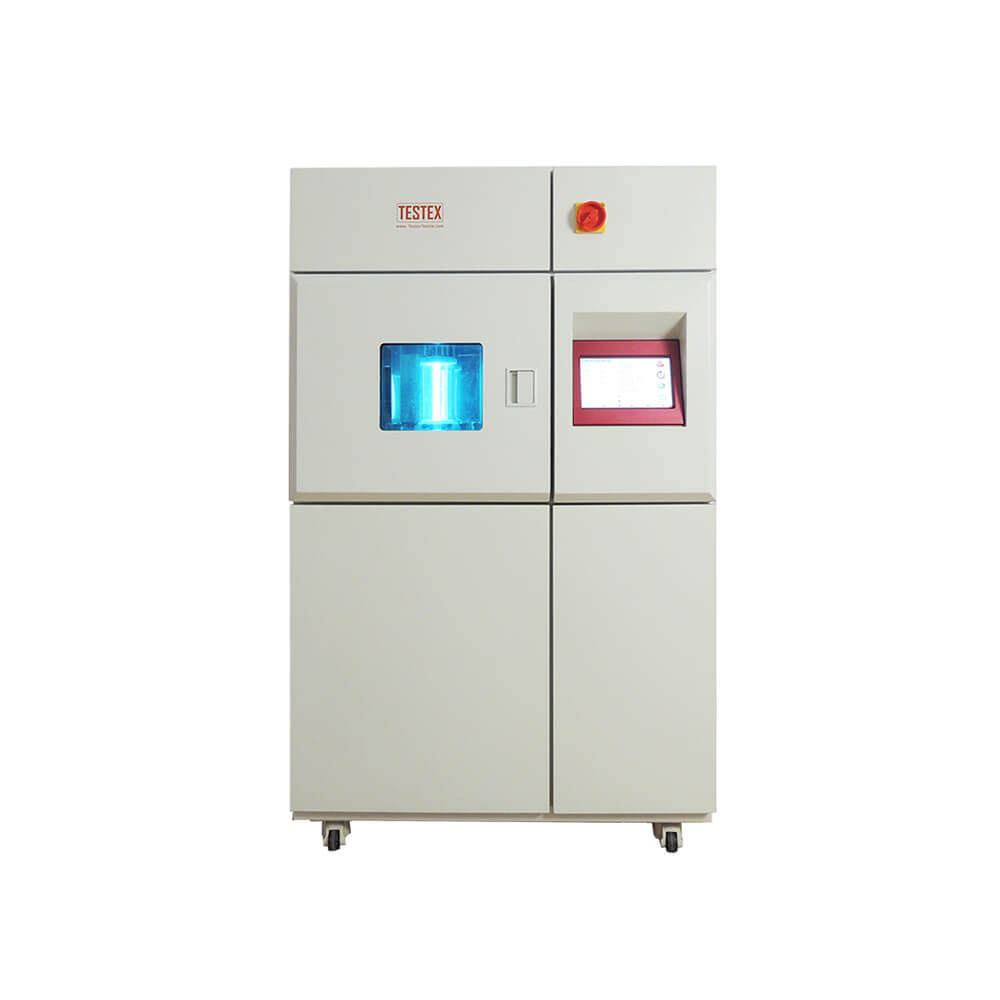
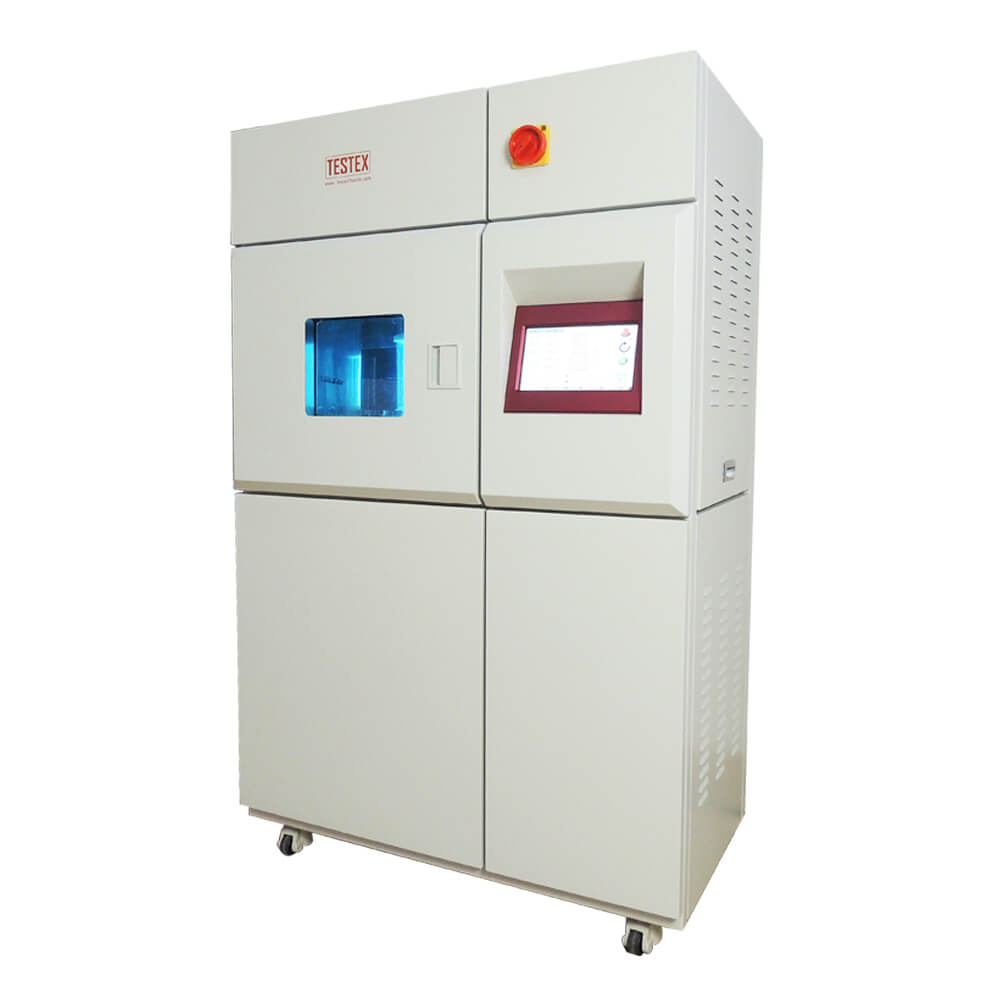
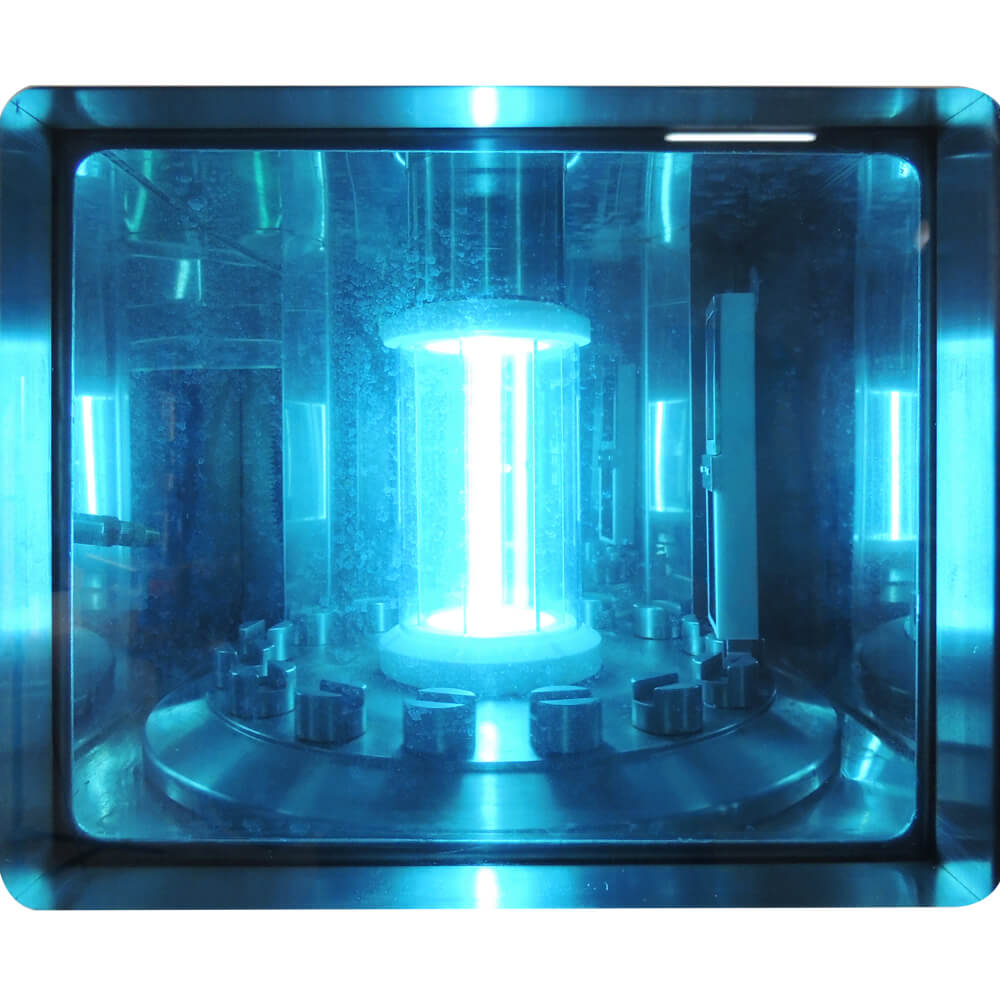
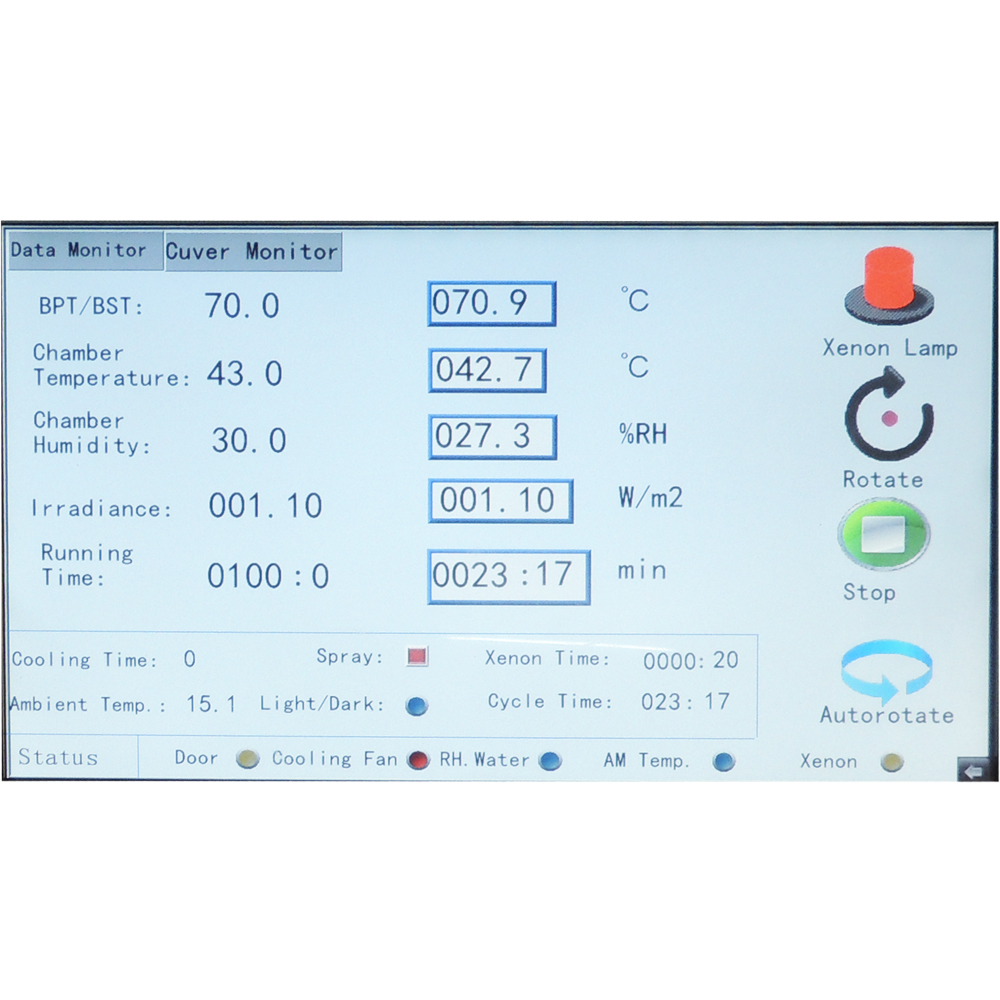

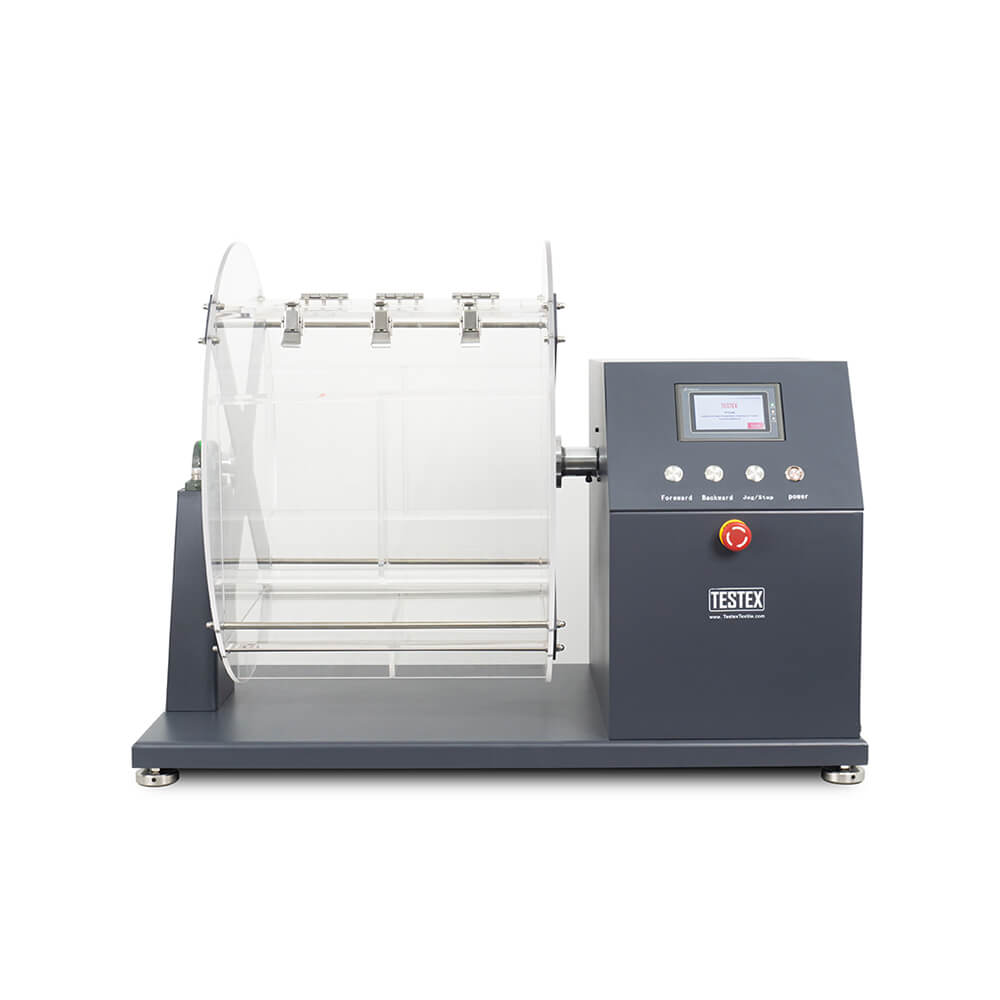
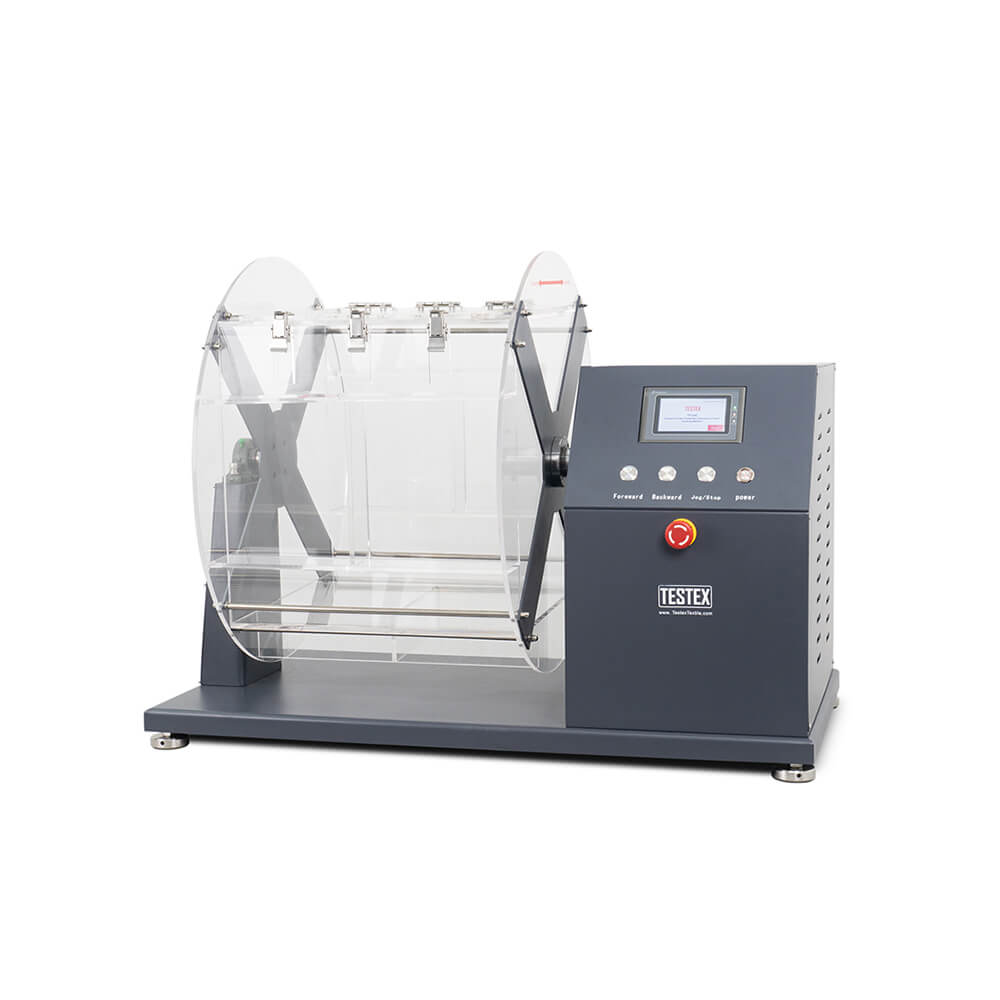
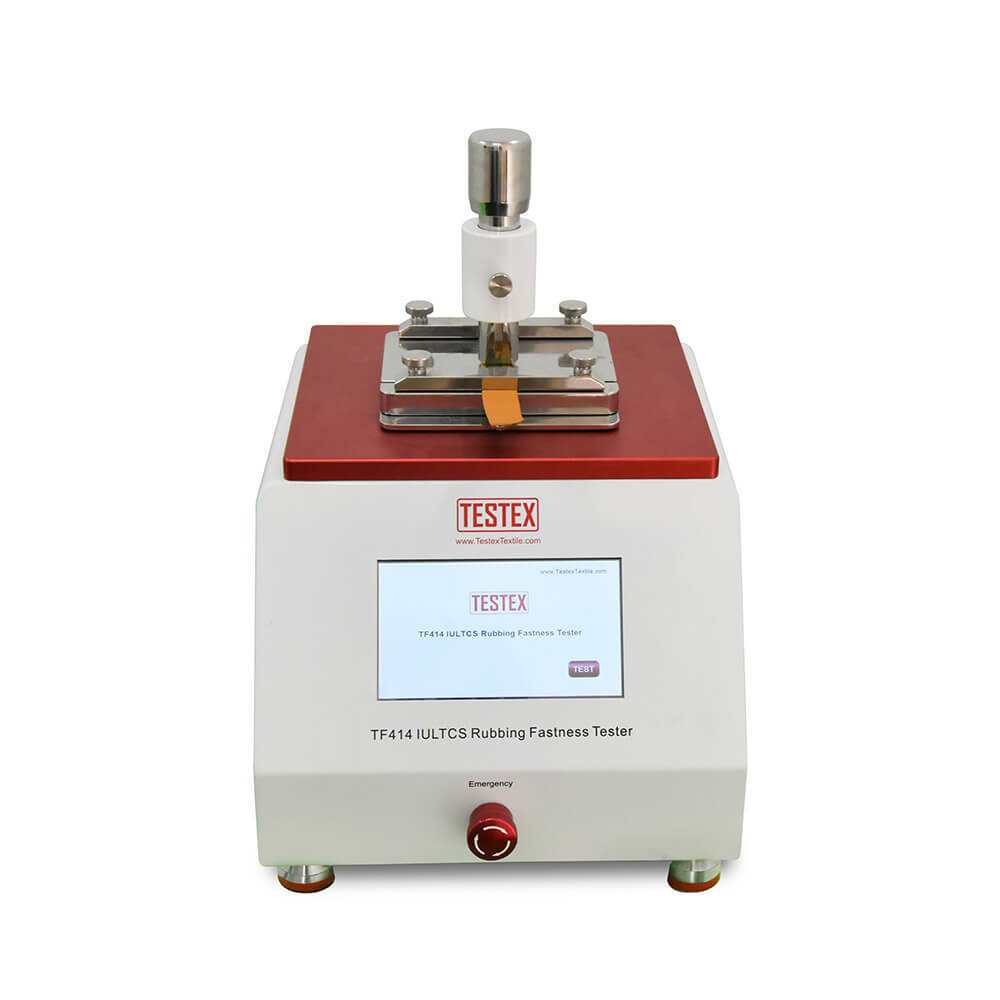
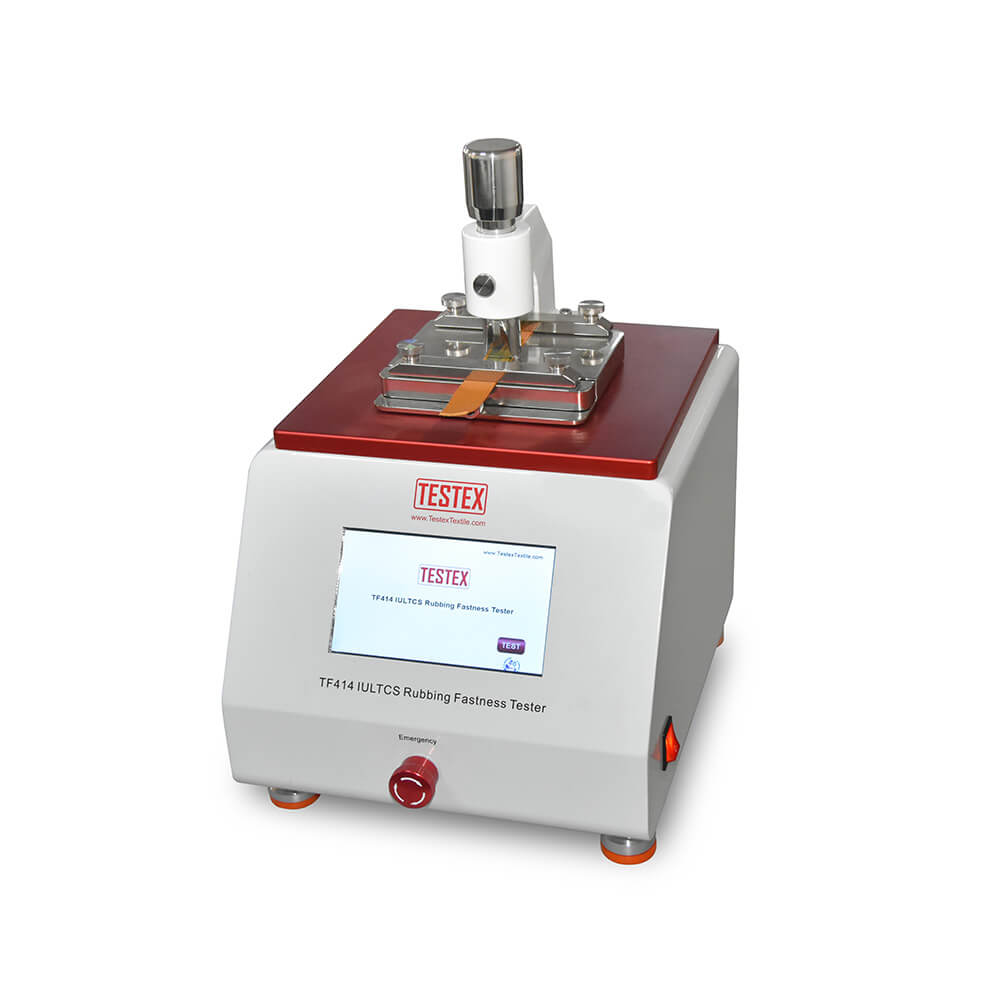
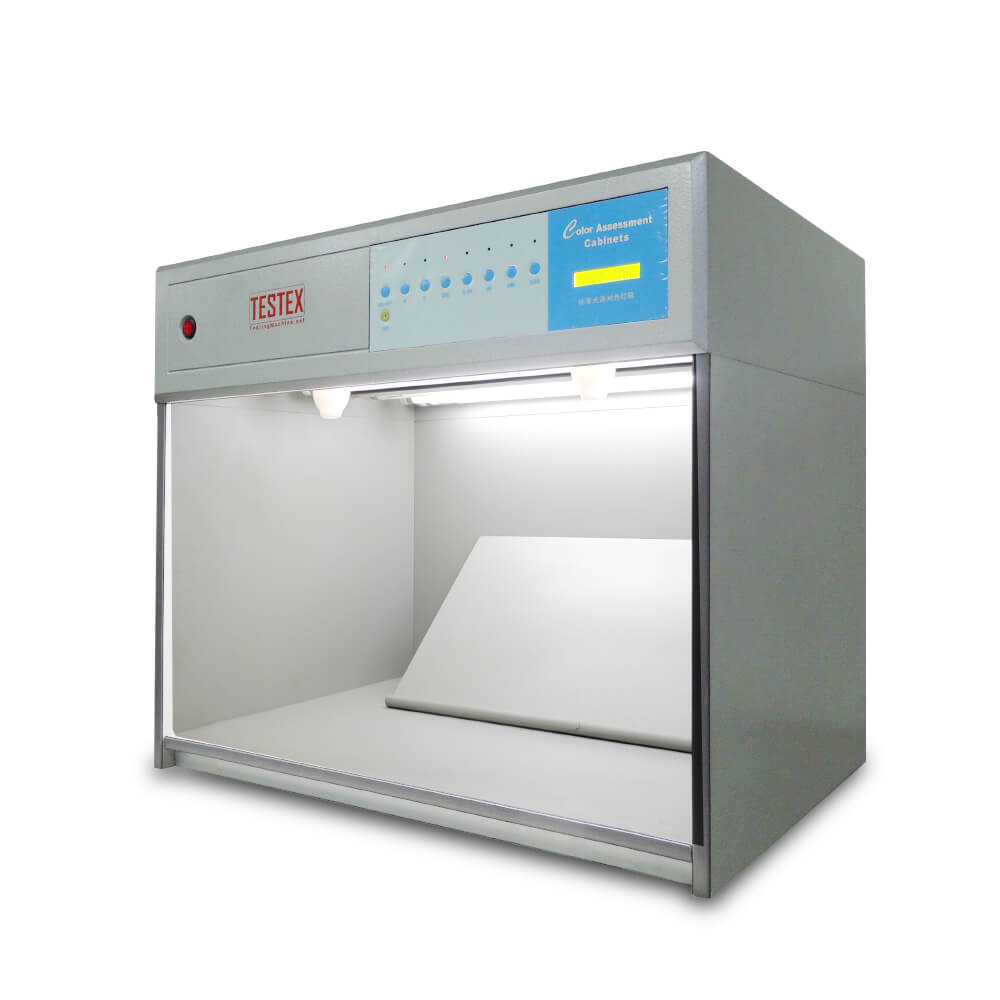
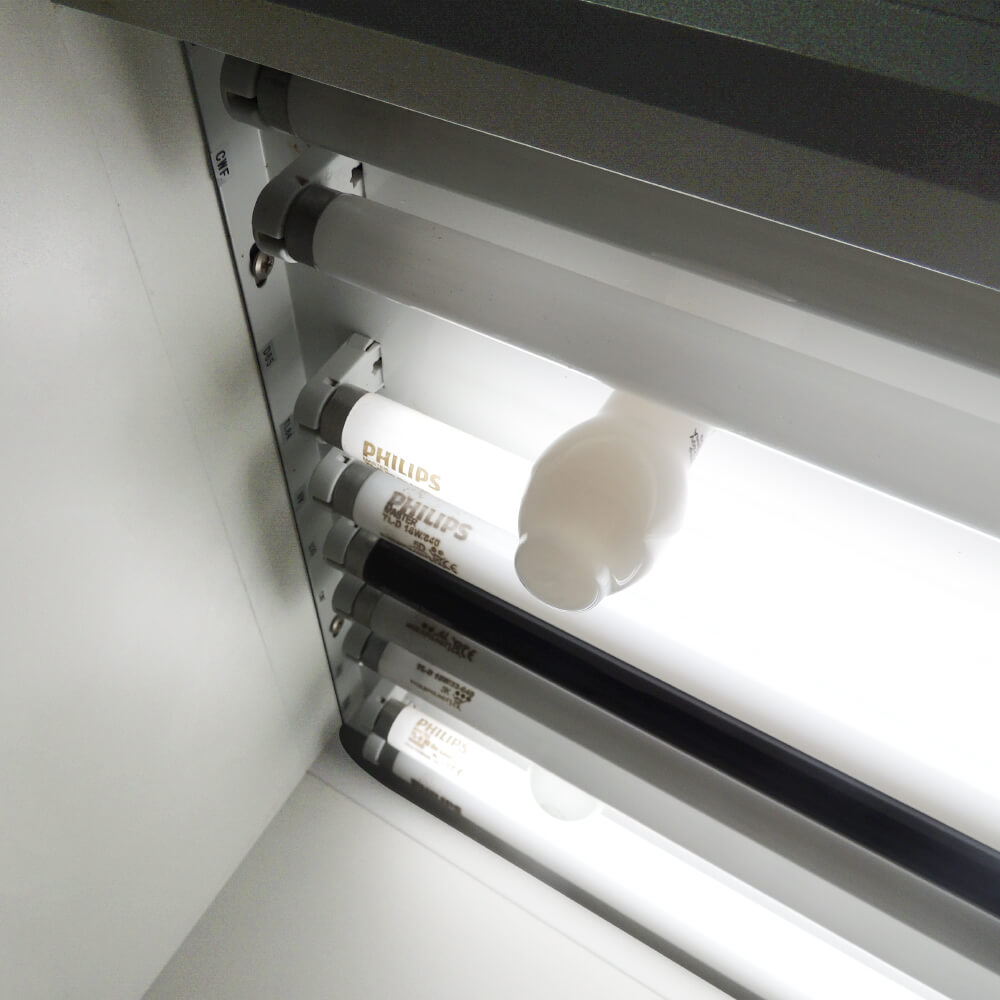
Jacob Martin –
To conduct the aging testing of the fabric, this chamber is a must
Chris Norman –
It took me a period of time to make the decision to buy this Xenon Test Chamber, but I got what I want, a well-designed machine with affordable price.
Nicole Flynn –
Perfect!!
Leila Hosea –
Fast delivry and it works fine.
Truman Rhys –
Professional manufacturer,Awesome machine!
Michell Moulton –
Received the machine, all are in good package. Thanks manufacturer.
Ron Harrod –
good
testextextile –
Thank you for your support, hope you can satisfied. Look forward to your next visit.